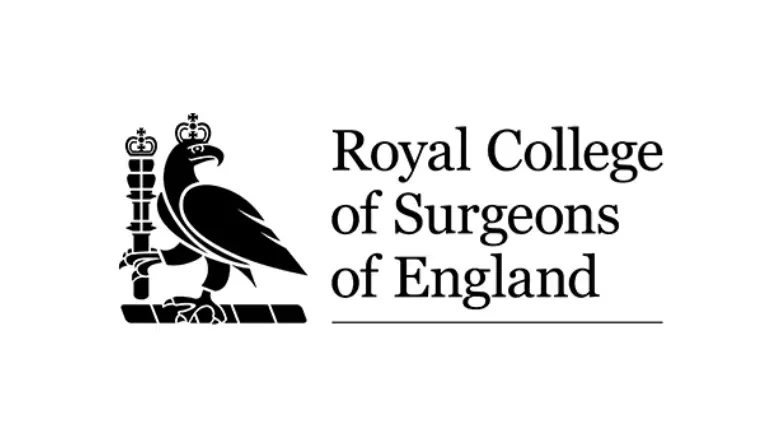Should Glands Be Addressed During a Neck Lift?
A neck lift, or platysmaplasty, is a surgical procedure aimed at rejuvenating the neck by improving its contours. It is commonly performed to address loose, sagging skin, excess fat deposits, and the visible banding caused by underlying neck muscles. For many individuals, it provides a more youthful and refined profile, boosting confidence and enhancing overall appearance. However, as surgical techniques advance, surgeons and patients alike are exploring the finer details of neck lift procedures. Among the considerations is whether glands in the neck should be addressed or trimmed during the procedure.
RELATED: Neck Lift Before & After Photos
The Anatomy of the Neck
A comprehensive understanding of the neck’s structure is essential when considering the intricacies of a neck lift and whether gland trimming may be necessary. This region comprises skin, fat, muscles, and important glands that all support your head and facilitate movement. Among these glands, the submandibular glands attract considerable attention because of their potential influence on the neck’s overall appearance. These particular glands sit beneath the jaw and produce saliva, an essential component of healthy digestion.
Ageing inevitably leads to changes in the neck as the skin and underlying muscles begin to lose their natural elasticity. Over time, gravity and the gradual loss of volume can result in sagging tissues and the development of jowls. While the submandibular glands typically retain a constant size, they may appear more noticeable when the surrounding tissue diminishes in firmness. Some individuals start to see a distinct bulge or fullness in the upper part of the neck, which can make the jawline appear less defined.
This change in neck contour prompts discussions about whether trimming these glands might help restore a more streamlined profile. Although the submandibular glands play a vital role in saliva production, their prominence can sometimes overshadow the subtle benefits achieved through a conventional neck lift. As techniques evolve and plastic surgeons continually refine their approaches, patients are often keen to explore every aspect of the procedure that might lead to optimal cosmetic outcomes.
RELATED: Solutions For Saggy Neck – Neck Liposuction vs Neck Lift
Understanding Gland Trimming During a Neck Lift
Gland trimming is a technique used in certain neck lift procedures to address specific cosmetic concerns that arise from the submandibular glands. These glands, found beneath the jaw, produce saliva and help with normal digestive functions. Despite their important role, they can sometimes become a source of cosmetic dissatisfaction when they create an unwelcome bulge or fullness in the upper neck. Gland trimming seeks to reduce that prominence in order to refine the neck’s appearance, but it is always carried out with great care to preserve essential gland function.
How the Gland Trimming Procedure Works
When a surgeon performs a neck lift, incisions are commonly made around the ear or under the chin to access the underlying tissues. If the submandibular glands are contributing to fullness, the surgeon will carefully locate and expose the glands during the operation. Only a portion of each gland is removed, and the surgeon will usually focus on the outer section that is most visible beneath the skin. This type of partial gland resection frequently involves taking away somewhere in the region of 30 to 40 percent of the gland’s volume, although the exact amount can differ from one patient to another. The goal is to achieve a noticeable aesthetic improvement while allowing the remaining gland tissue to keep functioning normally.
Achieving Precision and Preserving Function
Operating in the region around the submandibular glands demands advanced surgical expertise. The area contains critical blood vessels and nerves that are essential for controlling sensation and movement. Surgeons must be particularly mindful of avoiding damage to nearby nerve branches, which, if injured, could affect tongue movement or lip function. Precision is everything, and for that reason, some surgeons may use specialised instruments or even endoscopic methods to ensure an accurate approach. By remaining vigilant about protecting these structures, a skilled surgeon can enhance the neck’s contour while minimising any impact on saliva production or nerve function.
RELATED: Neck Lift Options – Types Of Neck Lift Surgery
Why Gland Trimming Can Be Beneficial
Having gland trimming as part of a neck lift can significantly enhance the definition of the jawline and reduce conspicuous fullness in the neck. When these changes are combined with the usual improvements from muscle tightening and removal of surplus skin, patients often feel they have gained a more refined and balanced profile. This additional contouring can be particularly appealing for those who have always felt that stubborn fullness in their neck overshadowed the results achievable through standard neck lift techniques alone.
Understanding the Risks and Possible Complications
Although gland trimming can offer excellent aesthetic benefits, it is crucial to recognise that any surgical intervention carries potential risks. Because the submandibular glands play a vital role in producing saliva, removing a section may, in rare instances, lead to reduced saliva flow. Such changes in saliva production can result in a dry mouth, which can be either short-lived or, on rare occasions, prolonged. There is also the possibility of affecting nerves that control sensation or movement around the lower lip or tongue. Additional concerns include the chance of removing too much gland tissue, which might cause the neck to look hollow or uneven. These complications tend to be uncommon, but they emphasise why choosing a surgeon with robust experience is paramount.
RELATED: Risks Of Neck Lift Surgery – Is A Neck Lift Safe?
Why Consultation and Surgeon Expertise Are Key
Whether or not to include gland trimming in your neck lift is a personal decision that should be guided by thorough consultation with a plastic surgeon with extensive familiarity with neck procedures. Not every patient will require gland trimming, and many will be entirely satisfied with the outcomes from more conventional techniques that focus on reshaping fat, tightening muscles, and removing loose skin. However, for those with a clear bulge or persistent fullness under the jaw, this form of partial gland removal may deliver a transformative improvement. Discussing your medical history, desired results, and any concerns about potential risks will help you and your surgeon arrive at a treatment plan that balances the aesthetic gains you hope to achieve with the level of risk you find acceptable.
Should Submandibular Glands Be Trimmed During a Neck Lift?
Deciding whether to include gland trimming in a neck lift can be a source of lively debate among surgeons and patients alike. Some experts champion partial gland removal when the submandibular glands contribute prominently to fullness in the upper neck and jawline. These supporters believe that removing a portion of the gland can lead to a more streamlined profile and a neck contour that looks fresher and more refined. They note that certain signs of neck ageing, such as localised bulges beneath the jaw, are not always resolved by simply tightening skin or repositioning muscles. Patients in this camp often report a heightened sense of satisfaction, largely because they see a direct improvement in an area that they feel has always been a stubborn cosmetic concern.
In contrast, other surgeons express reservations about interfering with the submandibular glands. They highlight the potential impact on salivary function, which, in their view, may not justify the aesthetic benefits. These surgeons point out that even a partial reduction of gland tissue carries some degree of risk, including potential nerve injury or compromised saliva production. They also underline the difficulty in reversing gland trimming, given that once tissue is removed, it cannot be replaced. This perspective often leads them to champion less invasive alternatives that focus on removing excess fat, tightening neck muscles, or refining the overall contour of the neck without modifying the glands themselves.
Assessing these differing viewpoints requires a clear understanding of what each patient hopes to achieve, along with a detailed evaluation of their unique anatomy and lifestyle. If an individual’s primary concern involves minimal gland prominence, they may find that a traditional neck lift, often combined with liposuction or muscle tightening, provides all the improvement they need. On the other hand, someone who has pronounced fullness directly under the jaw may see more dramatic and satisfying results by combining a conventional neck lift approach with careful gland trimming.
When Gland Trimming Might Be Recommended
Deciding whether to incorporate gland trimming into a neck lift is never a simple, uniform process. Each patient’s anatomy and aesthetic goals are unique, which means the surgeon must consider a range of factors before recommending this additional refinement technique. If you notice a pronounced bulge in the upper portion of your neck that remains visible despite attempts at traditional contouring, your submandibular glands may be responsible. Some individuals have thin skin in this region. That lack of thickness can make the underlying structures more apparent, highlighting gland prominence to a degree that is not always addressed by skin tightening alone. Your neck length, chin projection, and the volume of the glands themselves all play a part in determining whether gland trimming will be beneficial. When combined with a detailed assessment of your medical history, lifestyle habits, and healing capacity, these elements help your surgeon build an accurate picture of what might be achieved through a more targeted approach.
In some cases, patients return after a previous neck lift feeling dissatisfied with residual fullness in the upper neck, which may suggest that limited gland prominence is still overshadowing an otherwise satisfactory outcome. For individuals who aspire to a noticeably defined jawline and place great importance on the subtlety of that contour, gland trimming may offer an additional level of improvement that conventional tightening or neck liposuction cannot fully accomplish.
Exploring Alternatives to Gland Trimming
Many people assume that gland trimming is the only way to achieve a more refined neck profile. In reality, there are several other approaches that can be used to enhance the appearance of the neck, either as standalone treatments or in combination with one another. Some techniques are less invasive, while others focus on tightening and reshaping various layers beneath the skin. Although these methods may not address the specific issue of prominent submandibular glands, they can provide excellent outcomes for a wide range of neck concerns and aesthetic goals.
Liposuction and Contouring
One of the most popular alternatives to gland trimming is liposuction, which can effectively remove extra fat around the neck and jawline. This procedure is less invasive than gland trimming and has the potential to achieve a noticeable improvement if excess fat is the main concern. By carefully sculpting the area and removing only the right amount of fat, the surgeon can create a more pleasing shape without making significant changes to the structure of the neck. Recovery is often straightforward, and many people find that they can resume normal activities relatively quickly.
Platysma Tightening for Muscle Banding
When muscle banding contributes to an aged or wrinkled neck appearance, platysma plication is frequently included in a neck lift procedure. In this technique, the platysma muscle is tightened or repositioned to address vertical bands and improve overall neck contour. By focusing on the underlying muscle, surgeons can achieve a smoother and more lifted look, which is often enough to satisfy patients whose main concern lies in muscular laxity rather than gland prominence.
RELATED: What Is the Difference Between a Neck Lift and Platysmaplasty?
Addressing Loose Skin
Skin tightening has long been a cornerstone of neck rejuvenation. Traditional surgical techniques involve removing extra skin to provide a firmer appearance, and modern methods, such as energy-based treatments like FaceTite, can tighten lax tissues with minimal incisions. These approaches can be effective for individuals whose primary issue is sagging skin, and they may also pair well with liposuction or other procedures. The degree of skin laxity often influences whether these interventions will deliver the desired results without the need for more invasive measures.
RELATED: How to Tighten Neck Skin Without Surgery
Refining the Neck with Wrinkle Treatments
For people who are bothered by fine lines or vertical bands in the neck, wrinkle treatments can create temporary improvements. By relaxing certain muscles, these treatments can smooth out the neck’s surface and reduce the appearance of bands or wrinkles. While the effects usually last only for a few months, many patients appreciate the rapid results and minimal downtime. They can also be repeated to maintain a refreshed look, although they do not tackle deeper structural issues.
RELATED: How to Get Rid of Neck Lines
Creating Definition with Volumising Options
Another avenue for improving the neck region involves volumising treatments with dermal fillers that can provide subtle definition around the jawline. By carefully placing small amounts of filler, surgeons or aesthetic practitioners can shape the transition between the face and neck. These treatments must be topped up periodically if the patient wishes to maintain their new look. While they will not correct significant sagging or address gland prominence, they can be an excellent choice for those who simply want a gentle boost to definition.
Considering the Role of Neck Exercises
Although neck exercises are not a direct substitute for surgical intervention, they can help certain individuals keep their neck muscles toned and maintain a healthier posture. Stronger neck muscles sometimes give a minor lift or firmer appearance, especially when combined with an overall fitness routine and weight management plan. Those who are looking for a purely natural method can explore targeted exercises but should keep in mind that these may not produce dramatic changes in moderate to severe cases of neck ageing.
FAQs about Gland Trimming during Neck Lift Surgery











